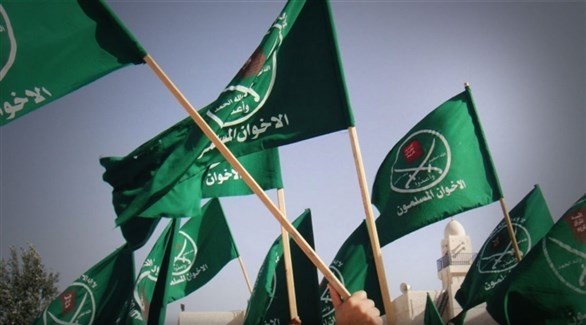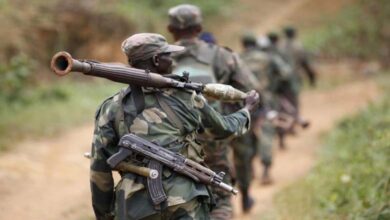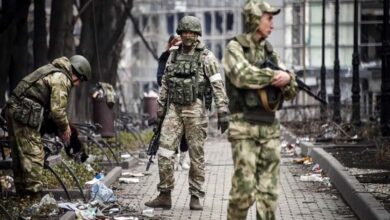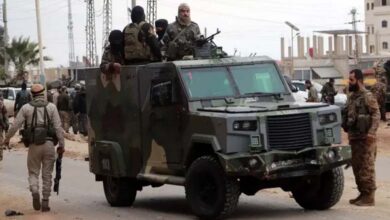Muslim Brotherhood is facing a dark fate, and its crises continue

The terrorist Brotherhood has suffered from numerous defections in recent times – the most difficult crises for the terrorist group since its foundation after it was ousted from power in 2013.
Defection phenomenon
A study by the Trend Center revealed the phenomenon of schisms in the Muslim Brotherhood, from its first years of existence until after June 2013, and based on a number of approaches, including the generational gap approach, the religious market approach, the social movement cohesion approach, and the youth empowerment approach, on the premise that these approaches will allow to identify the changes that took place in the path of the Muslim Brotherhood and pushed towards its cohesion. They will also investigate the reasons that led individuals and groups to withdraw from it, and reveal the exclusionary nature of the Muslim Brotherhood, and the absence of its participatory structures in light of a culture of blind obedience.
The study pointed out that the terrorist Muslim Brotherhood group has witnessed a number of important defections since its establishment until the end of the rule of late President Abdel Nasser in 1970, which can be seen through a historical and institutional approach. The second approach will attempt to shed some light on the reasons and the institutional and ideological determinants of these splits. These hypotheses revolve around a set of determinants that govern the extent and nature of dissent within major social movements. Among these specific factors, we will learn about the centrality of organization, the influence of the charismatic leader, and the extent of violence within the organization, especially since that period witnessed deep disagreements and conflicts within the group, which represented the beginning of deep disagreements that hit the group in the following decades.
Internal conflicts
The study pointed out that during the era of President Sadat, the Muslim Brotherhood did not witness any organizational schisms, whether small or large, but the group witnessed during this period a major spread in society and a remarkable growth in its organizational structure after large groups of young Islamists joined them inside Egyptian universities. Several factors contributed to the fact that the Brotherhood did not face any defections during this historical period.
The study pointed out that the splits witnessed by the Brotherhood from January 25, 2011 until now are the biggest and most dangerous, given that it took on a collective character, which quickly turned into a struggle for the leadership of the Brotherhood, and then intensified due to the disappearance of most of the historical active leaders inside Egyptian prisons, who were able to resolve conflicts and curb internal influence. This made the Brotherhood difficult to control divisions, which made it difficult to control, for the first time in its history, after the conflict between Ibrahim Munir and Mahmoud Hussein erupted, and accused each other of financial and administrative corruption.
Multiple crises
It said the defections were not limited to the Muslim Brotherhood’s parent group in Egypt, but also include several of its prominent branches in the Arab region, which is a result of strong ties between the parent group and its regional affiliates. This can be attributed to geographical proximity and shared cultural legacies, in addition to direct political repercussions among the countries of the region, or what can be called “political contagion,” meaning that what happens in one Arab country in different forms quickly spreads to other countries, including crises afflicting extremist organizations, foremost among them the Muslim Brotherhood. This has led the group’s branches in some countries, such as Jordan, Libya, Tunisia, Morocco, Mauritania, and Palestine, to witness splits and divisions very similar to those that hit the mother group in Egypt.
Severe controversies
Dr. Tarek Al-Basheishi, a dissident Muslim Brotherhood leader who specializes in extremist groups, says that what is clear between the mother Brotherhood in Egypt and the International Organization of the Brotherhood caused the latter to be exposed to strong shocks, which increased in intensity with the division that hit the mother Group in the past period. This made the severe crises that the group faces, since the Revolution of 30 June 2013 until now, reflect greatly on the international organization, and increase the state of weakness that started with the beginning of the early 1990s, when the Brotherhood of Kuwait broke away from the international organization due to Saddam Hussein’s invasion of their country.
Possible scenarios
He pointed out that the group has four possible future scenarios, the first of which is the continuation of the conflict between these wings with limited defections, and the second of which is the continuation of the conflict between these wings with the occurrence of major defections. “Third, the end of the factional conflict and the return of the group’s cohesion – a weak but irrefutable scenario – cannot be ruled out if the group succeeds in turning the page on internal disagreements.”
He stressed that the struggle within the terrorist group in the first place is a struggle for survival of interests and influence, and a conflict between the fronts of Turkey and London, which shows and confirms the great suffering that the terrorist group is currently experiencing.












